formerly eScholarship Editions


|
|
|
|
Your search for
'Television and Radio' in subject
found 5 book(s). | Modify Search | Displaying 1 - 5 of 5 book(s) | |
| 1. | 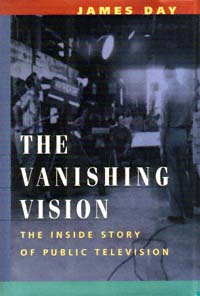 | Title: The vanishing vision: the inside story of public television Author: Day, James 1918- Published: University of California Press, 1995 Subjects: Media Studies | American Studies | Sociology | Television and Radio | History Publisher's Description: This spirited, first-ever history of public television offers an insider's account of its topsy-turvy, forty-year odyssey. James Day, a founder of San Francisco's KQED and a past president of New York's WNET, chronicles public television's fascinating evolution from its inauspicious roots in the 1950s to its strong, fiercely debated presence in contemporary culture. The Vanishing Vision provides a vivid and often amusing behind-the-screens history. Day tells how a program producer, desperate to locate a family willing to live with television cameras for seven months, borrowed a dime - and a suggestion - from a blind date and telephoned the Louds of Santa Barbara. The result was the mesmerizing twelve-hour documentary, An American Family . Day relates how Big Bird and his friends were created to spice up Sesame Street when test runs showed a flagging interest in the program's "live-action" segments. And he describes how Frieda Hennock, the first woman appointed to the FCC, overpowered the resistance of her male colleagues to lay the foundation for public television.Along the way, Day identifies the particular forces that have shaped public television. The result, in his view, is a Byzantine bureaucracy kept on a leash by an untrusting Congress, with a fragmented leadership that lacks a clearly defined mission in today's multimedia environment. Public television's "democratic" structure of over 300 stations stifles boldness and innovation while absorbing money needed for national programming.Day calls for a bold rethinking of public television's mission, advocating a system that is adequately funded and independent of government, one capable of countering commercial television's "lowest-common-denominator" approach with a full range of substantive programs, comedy as well as culture, entertainment as well as information. [brief] Similar Items |
| 2. | 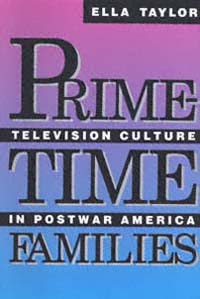 | Title: Prime-time families: television culture in postwar America Author: Taylor, Ella Published: University of California Press, 1989 Subjects: Sociology | United States History | Media Studies | Gender Studies | Television and Radio Similar Items |
| 3. | 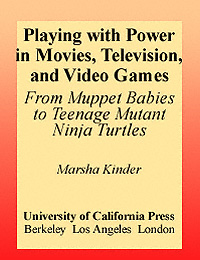 | Title: Playing with power in movies, television, and video games: from Muppet Babies to Teenage Mutant Ninja Turtles Author: Kinder, Marsha Published: University of California Press, 1991 Subjects: Cinema and Performance Arts | Film | Television and Radio | Popular Culture Publisher's Description: How do children today learn to understand stories? Why do they respond so enthusiastically to home video games and to a myth like Teenage Mutant Ninja Turtles? And how are such fads related to multinational media mergers and the "new world order"? In assessing these questions, Marsha Kinder provides . . . [more] Similar Items |
| 4. | 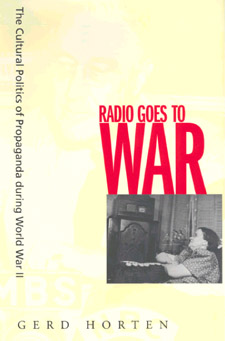 | Title: Radio goes to war: the cultural politics of propaganda during World War II Author: Horten, Gerd 1959- Published: University of California Press, 2002 Subjects: History | United States History | Media Studies | American Studies | Television and Radio Publisher's Description: Radio Goes to War is the first comprehensive and in-depth look at the role of domestic radio in the United States during the Second World War. As this study convincingly demonstrates, radio broadcasting played a crucial role both in government propaganda and within the context of the broader cultural and political transformations of wartime America. Gerd Horten's absorbing narrative argues that no medium merged entertainment, propaganda, and advertising more effectively than radio. As a result, America's wartime radio propaganda emphasized an increasingly corporate and privatized vision of America's future, with important repercussions for the war years and the postwar era. Examining radio news programs, government propaganda shows, advertising, soap operas, and comedy programs, Horten situates radio wartime propaganda in the key shift from a Depression-era resentment of big business to the consumer and corporate culture of the postwar period. [brief] Similar Items |
| 5. | 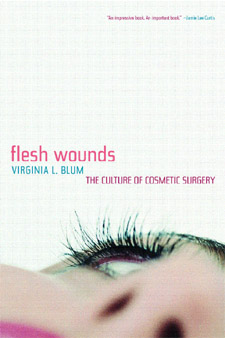 | Title: Flesh wounds: the culture of cosmetic surgery Author: Blum, Virginia L 1956- Published: University of California Press, 2003 Subjects: American Studies | Gender Studies | Film | Psychology | Literary Theory and Criticism | Sociology | Anthropology | Television and Radio | Women's Studies Publisher's Description: When did cosmetic surgery become a common practice, the stuff of everyday conversation? In a work that combines a provocative ethnography of plastic surgery and a penetrating analysis of beauty and feminism, Virginia L. Blum searches out the social conditions and imperatives that have made ours a culture of cosmetic surgery. From diverse viewpoints, ranging from cosmetic surgery patient to feminist cultural critic, she looks into the realities and fantasies that have made physical malleability an essential part of our modern-day identity. For a cultural practice to develop such a tenacious grip, Blum argues, it must be fed from multiple directions: some pragmatic, including the profit motive of surgeons and the increasing need to appear young on the job; some philosophical, such as the notion that a new body is something you can buy or that appearance changes your life. Flesh Wounds is an inquiry into the ideas and practices that have forged such a culture. Tying the boom in cosmetic surgery to a culture-wide trend toward celebrity, Blum explores our growing compulsion to emulate what remain for most of us two-dimensional icons. Moving between personal experiences and observations, interviews with patients and surgeons, and readings of literature and cultural moments, her book reveals the ways in which the practice of cosmetic surgery captures the condition of identity in contemporary culture. [brief] Similar Items |